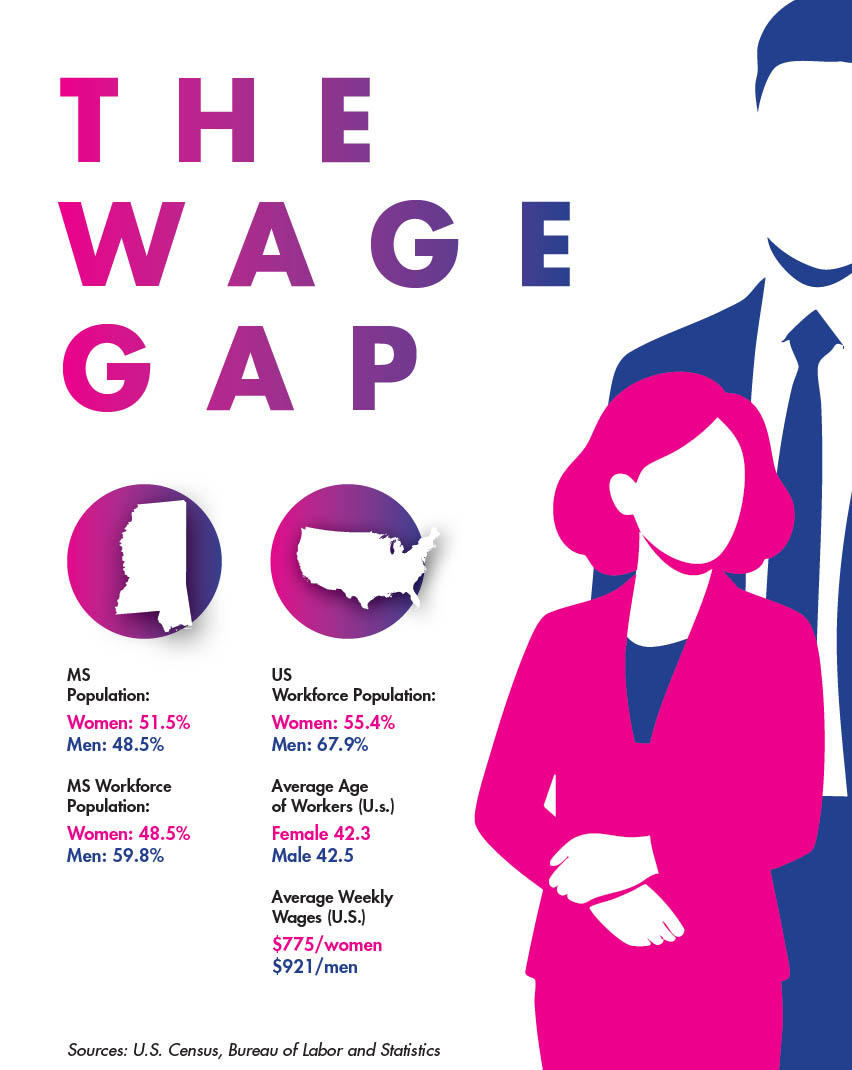In the heart of rural America, women are a vital force in sustaining communities—both at home and in the workforce. Yet, many of these women earn less than men doing the same work. This persistent wage gap inspired Dr. Ayoung Kim, assistant agricultural economics professor and Mississippi Agricultural and Forestry Experiment Station (MAFES) scientist, to explore the issue through a new lens that accounts for where people live, what jobs they hold, and how far along they are in their careers.
Shortly after moving to Mississippi, Kim was listening to Mississippi Public Broadcasting Think Radio when she heard a story that stuck with her. A Black woman from rural Mississippi shared her struggle to not only find a job but find one that paid enough to survive. She spoke about the disadvantage she faced due to both her gender and race.
"It was a topic I hadn't really considered in depth before," said Kim, a Mississippi State researcher. "But as soon as I heard her story, I knew I wanted to explore it further. As an applied and regional economist, I felt that one way I could contribute is by using empirical analysis to shed light on real social issues."
Working with Dr. Brigitte Waldorf of Purdue University, Kim led a study that went beyond traditional gender comparisons. Instead of focusing solely on national averages, the study looked at gender, geography, job classification, and stage of career.
"In rural areas, women often have fewer job options, limited workplace protections, and less access to essential services like childcare, eldercare, and healthcare," Kim said. "These challenges stack up over time, widening the wage gap and creating long-term barriers to career advancement."
While conversations around the wage gap have gained national momentum in recent years, they often overlook the unique realities faced by women in rural communities where economic opportunities are scarcer and support systems are harder to find.
To better understand these dynamics, Kim used a matched sample method that compared men and women with similar qualifications, job characteristics, and individual and family characteristics. This approach helped isolate the impact of gender across various labor market conditions. Among the most notable findings was that older rural women in high-paying roles earn approximately $20,000 less per year than their male counterparts. Over a decade, this gap can accumulate to nearly a quarter of a million dollars in lost earnings, widening long-term wealth inequality.
At the other end of the career spectrum, younger women in low paying rural jobs also face significant pay gaps, setting the stage for continued financial setbacks.
"Geography isn't just a backdrop for women in rural communities, it plays an active role in shaping economic outcomes," Kim said. "Rural labor markets are often less diverse, and they lack resources that help women stay in the workforce and advance over time."
According to Kim, closing the gender wage gap requires more than a one-size-fits-all solution. Place-based policy interventions are essential. These include expanding access to childcare, eldercare, and healthcare in rural communities, along with supporting flexible work policies that accommodate the caregiving responsibilities many women carry.
"Closing the gender wage gap in rural areas is not just about fairness—it's a key to strengthening rural economies," Kim said. "When women can fully participate in the labor force, rural communities as a whole are stronger, more resilient, and better prepared for the future."
This research is funded by the Mississippi Agricultural and Forestry Experiment Station.
Closing the gender wage gap in rural areas is not just about fairness—it's a key to strengthening rural economies. When women can fully participate in the labor force, rural communities as a whole are stronger, more resilient, and better prepared for the future.
Dr. Ayoung Kim
Behind the Science

Ayoung Kim
Assistant Professor
Education: B.S., Urban Planning and Engineering, Yonsei University (South Korea); M.A., Agricultural Economics and Regional Development, Seoul National University (South Korea); M.A., Mathematics, State University of New York at Buffalo; Ph.D., Agricultural Economics, Purdue University
Years At MSU: 7
Focus: Regional economics, labor and population economics, applied econometrics, spatial/regional data analytics
Passion At Work: Through my research, I aim to uncover the economic dynamics that shape rural communities by addressing critical issues in regional development and labor markets systems through research and extension activities.


